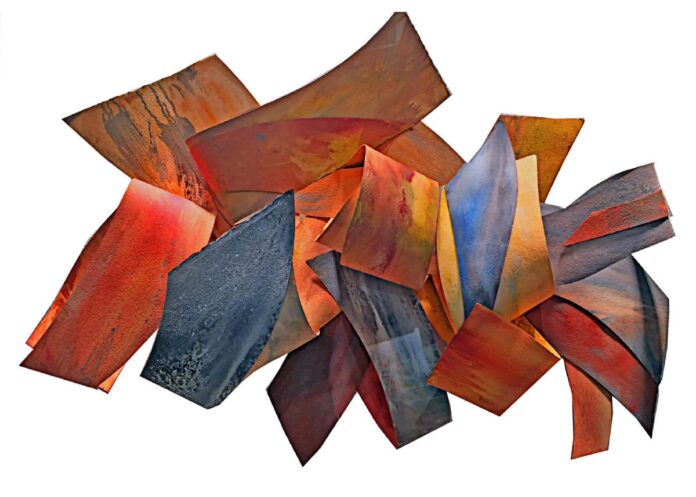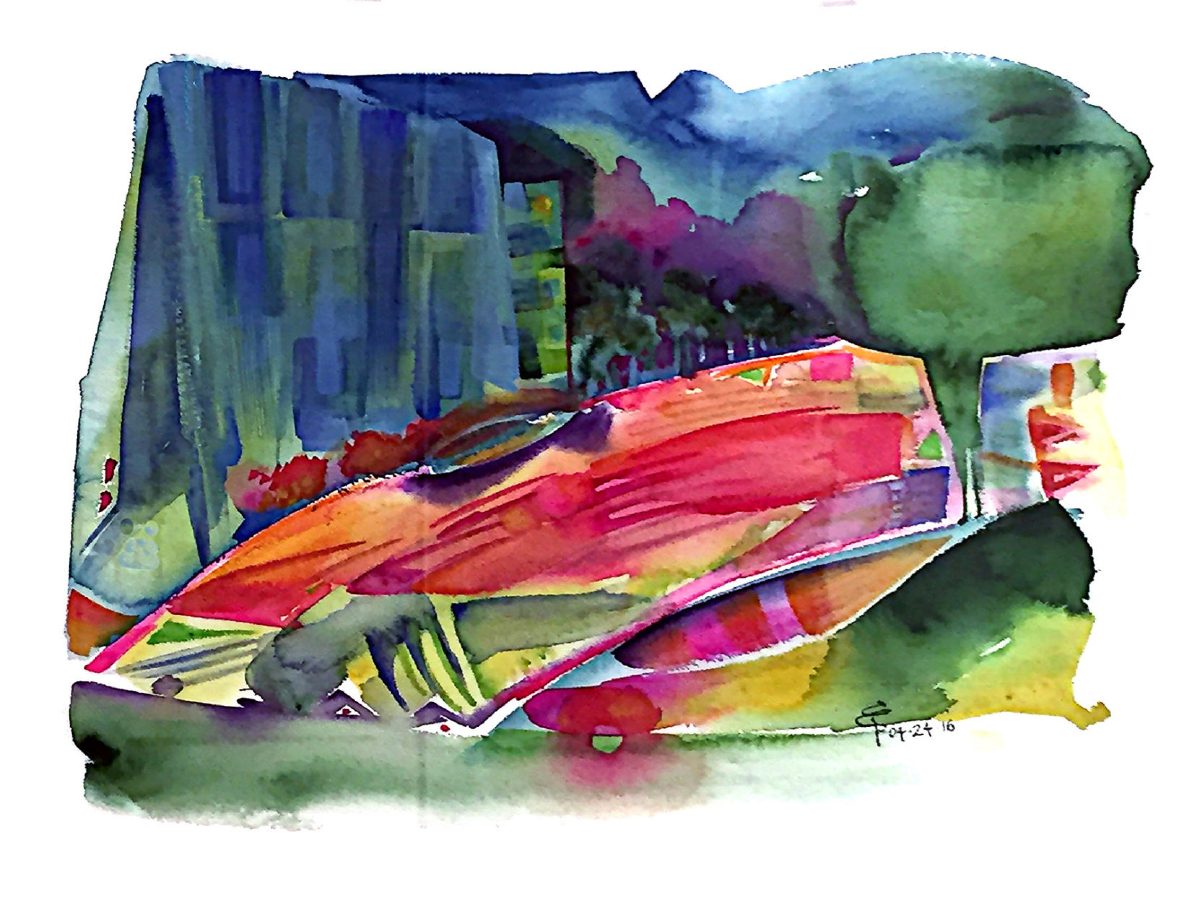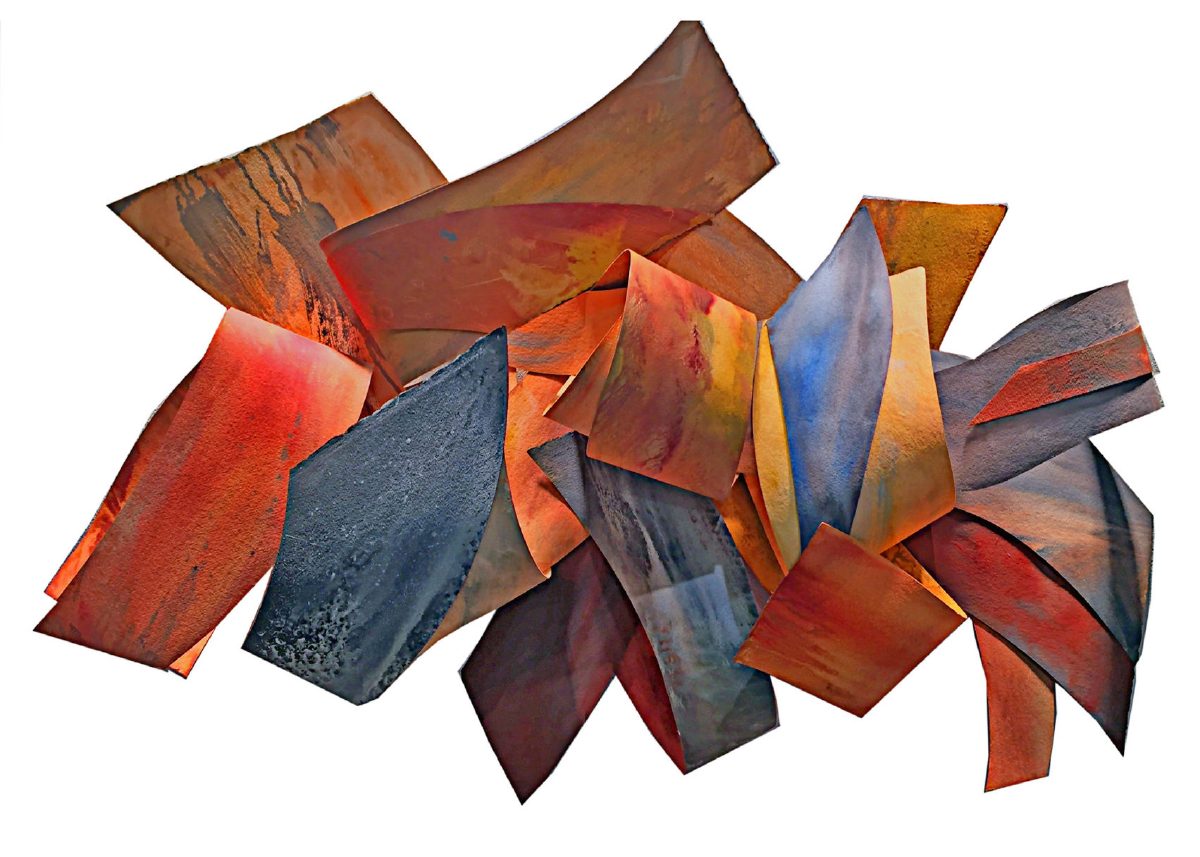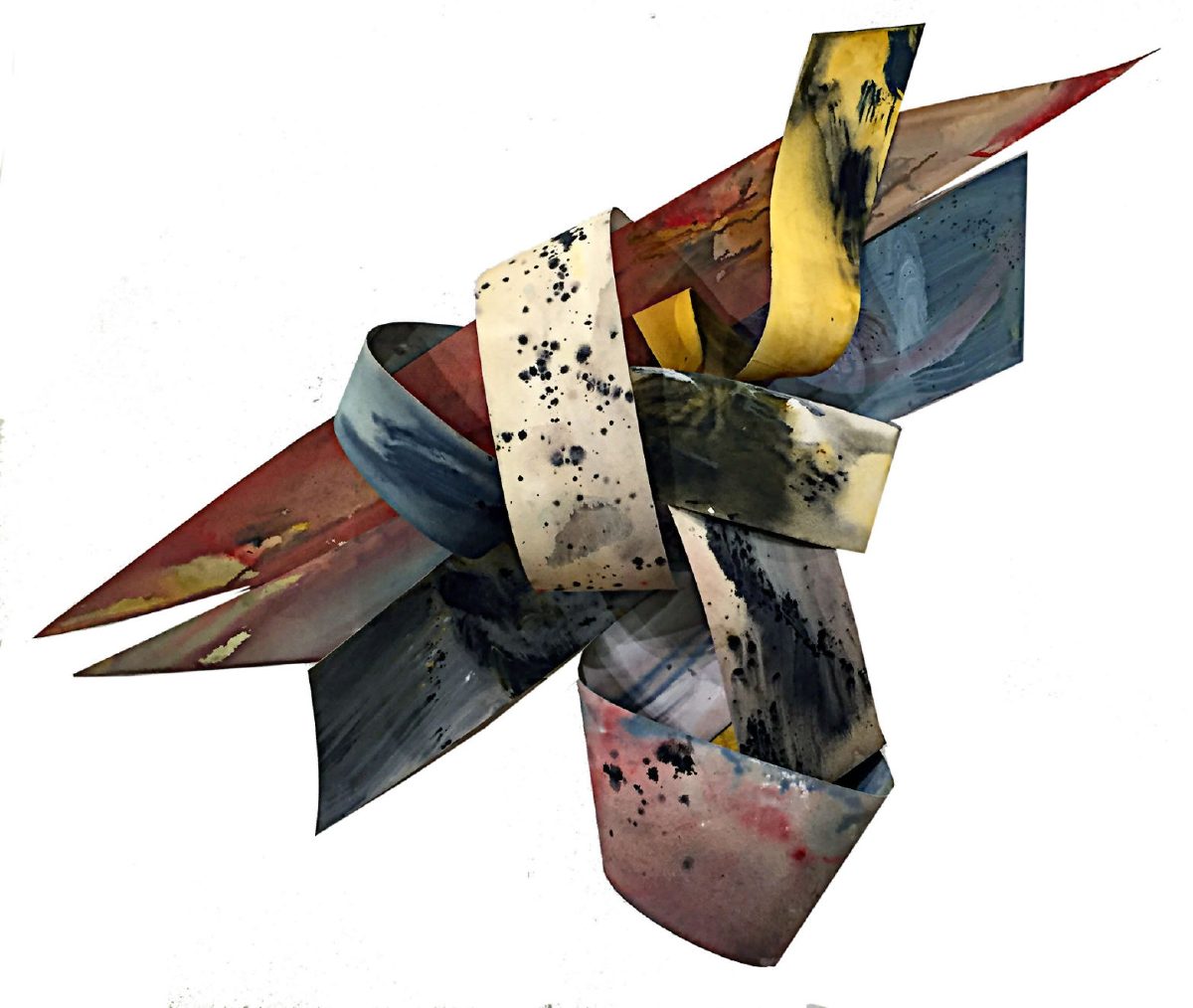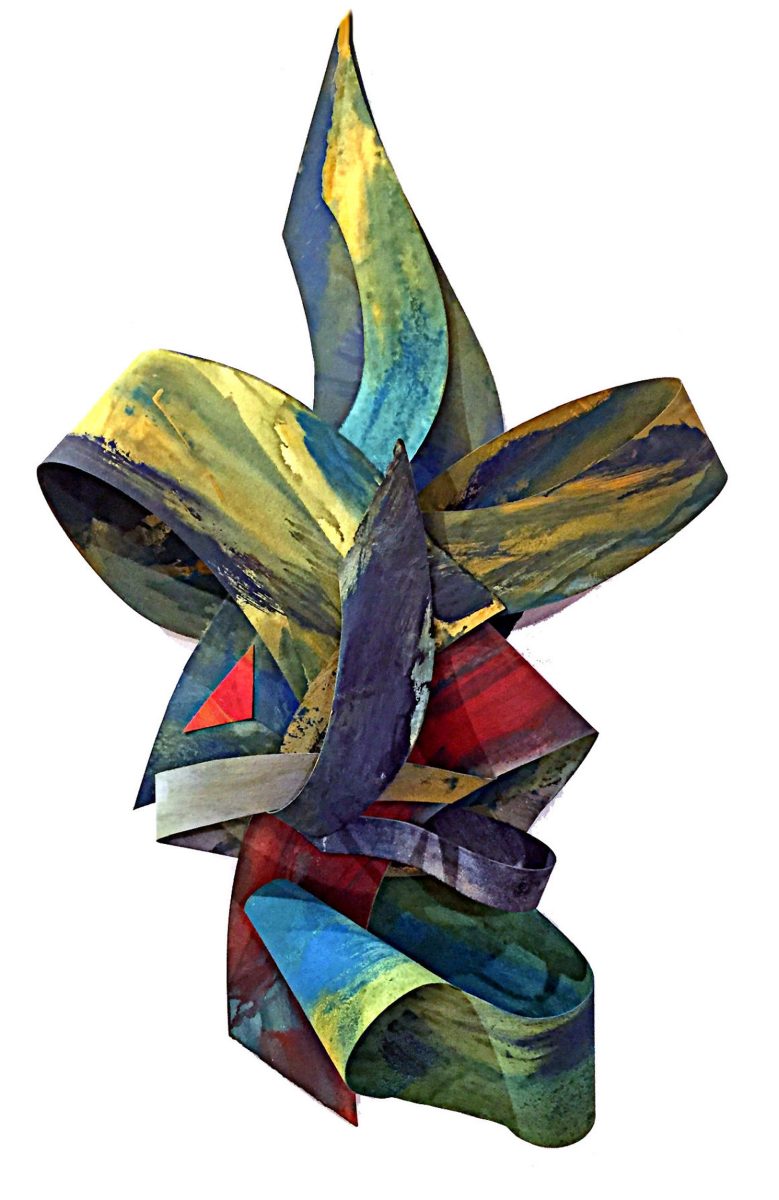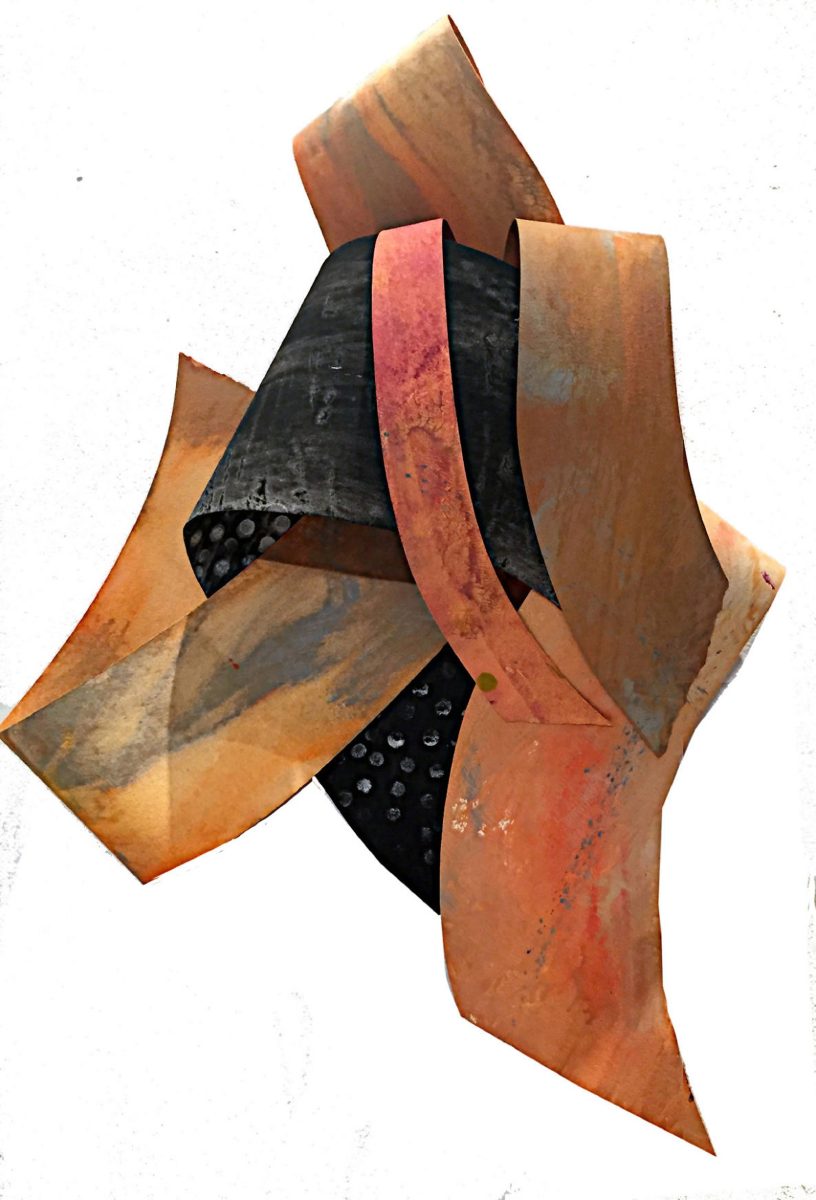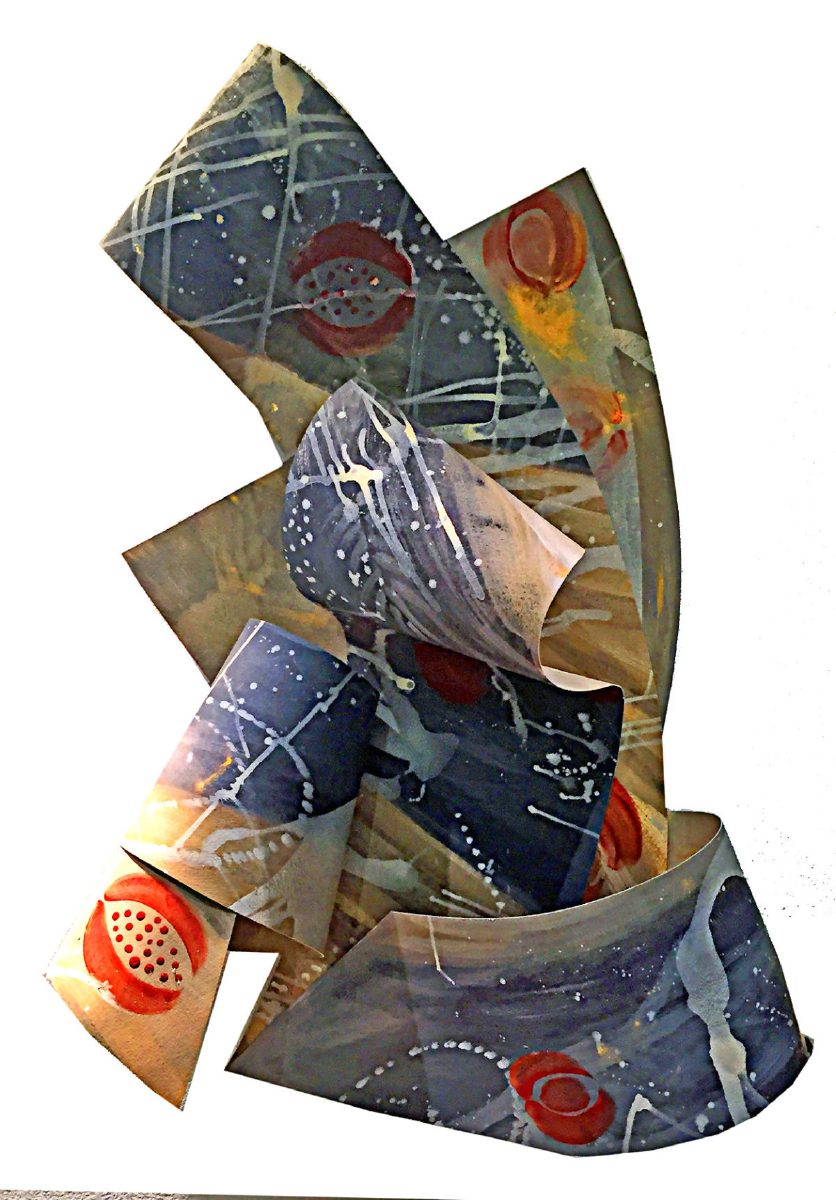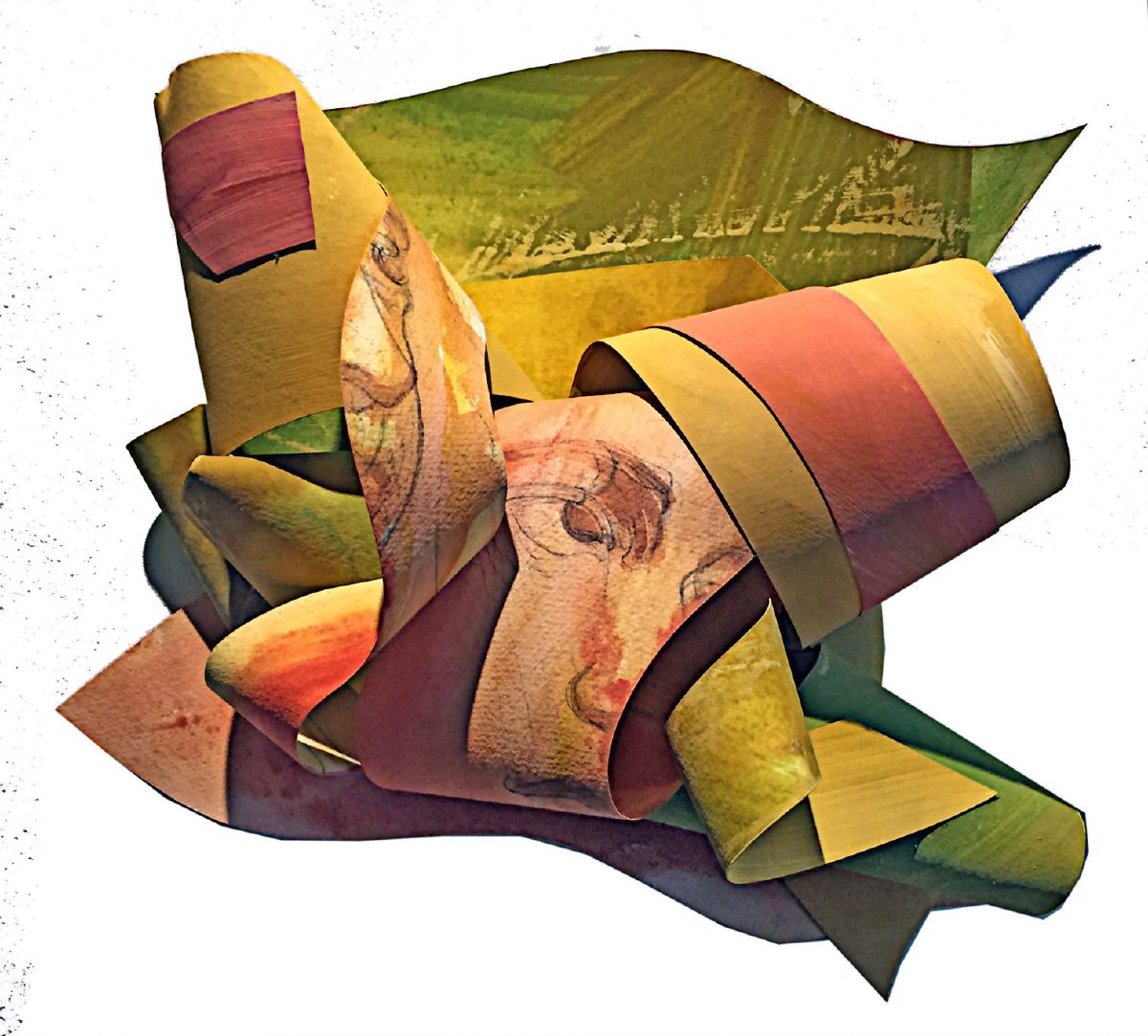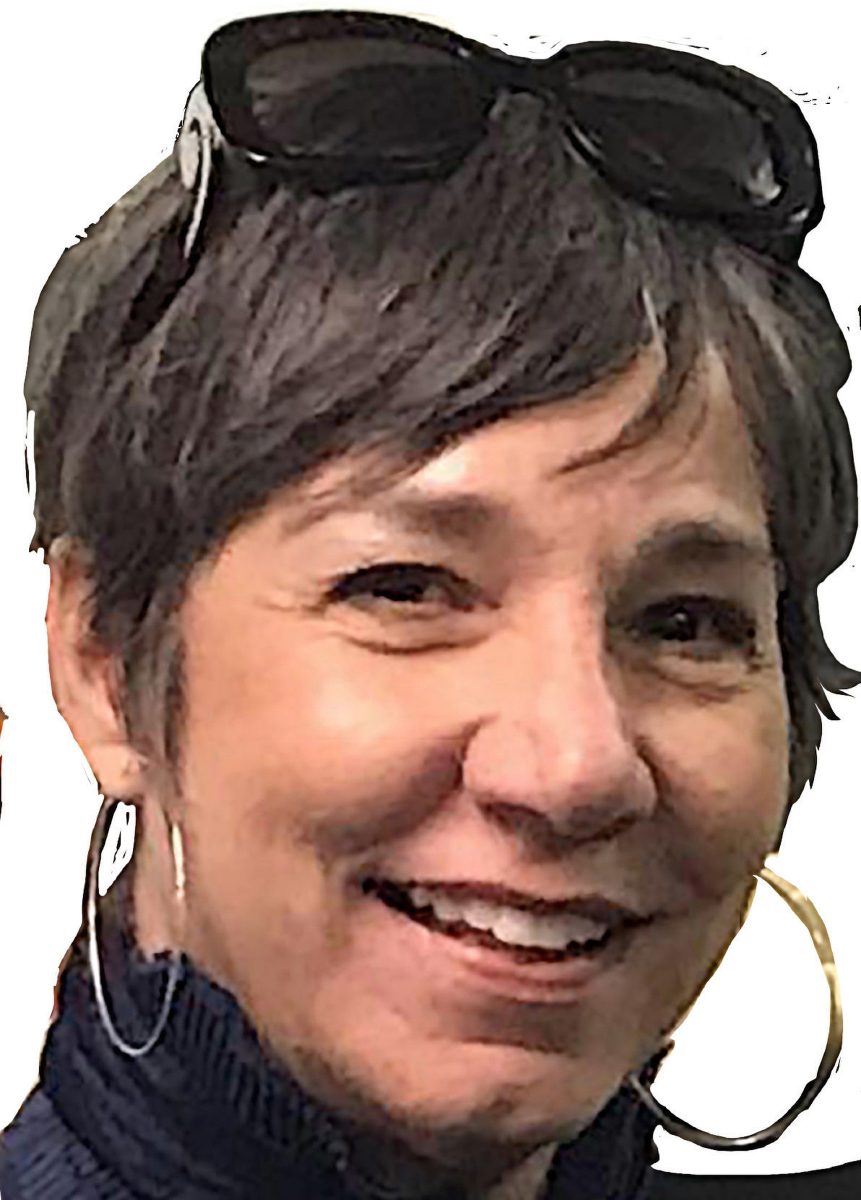BY NANCY MOYER
Serena Pandos takes us on a giant leap from her previous work in Russian iconography to American abstraction. It turns out to be a positive move, with works stimulating and engaging the senses.
Wall sculptures dominate with portable display walls showing pencil drawings and watercolors. The exhibition celebrates works on paper, art as a mental building block, and documents her graduate journey from representational into an abstract art genre.
“Our origins as a civilized society involve paper, either conceptually or literally,” said Pandos, who is also the director of the International Museum of Art and Science. “As an artist and arts administrator, paper is an essential tool for helping me structure my thoughts, my time, my priorities and goals. Getting things down on paper is a way for me to reconcile my ideals with reality.”
The wall sculptures, made of convoluted strips of paper, are vibrantly alive with rich watercolor tones, extemporaneous patterns and linear brushstrokes that exist for an instant and then vanish within elegantly re-ceding curves. To create them, strips of watercolor paper cut from large format sources were manipulated by coloring, bending or folding. Working intuitively, Pandos let the materials lead her to the final expressive formulations. Constantly encouraged to “get out of her comfort zone,” she played with process and order, learning to let the work speak to her as she created.
Pandos explained that for these sculptures she focused on line, color and shape — a big step from her symbolic and representational iconographic work.
In a reconciliatory statement, she said, “I could see that the honor was still there. So, instead of honoring with each brushstroke a prayer, a Saint, or an angel or something, it was just color, line, shape and form honoring what the formal artistic elements can do for an aesthetic experience. My purpose was to get out of that comfort zone and try something different, and this show documents that experience.”
Pandos’ works go beyond her modest statement of identifying the formal trappings of abstract art. While these sculptures certainly utilize those elements, they are informed by more. They speak of a representation of conflict and resolution. Their significance reflects the artist’s interest, knowledge, and ultimate integration of wellness research examining art as brain therapy.
As she was struggling to reconcile her earlier artistic conceptions with more personal perceptions, she be-came aware of recent German neurological studies offering a breakthrough in medical wellness. Using electronic imaging, brain activity was measured when making art, as well as what happens to the brain when ob-serving art. While both groups increased their resilience, stress reduction, and increased cognitive activities, making art produced a higher degree of executive functioning. The neurological images showed that the art process helps to create new neural pathways, helpful in general problem-solving areas. It’s no longer just an art theory.
The wall sculptures are the manifestations of large and knotty problems that have somehow been con-fronted and conquered through the art process. They illustrate the artist’s mind developing new neural pathways and solving what was a big problem. Each piece reflects a certain tension that the viewer can perceive and understand. The take-away is mental stimulation and resolution.
“I love doing this, but I miss my iconography quite a bit,” Pandos concluded, “but now I feel like I can let go and use my own experience.”
Nancy Moyer, Professor Emerita of Art at the University of Rio Grande Valley, is an art critic for The Monitor. She may be reached at [email protected].
What: “Serena Pandos: MFA Graduate Show”
Where: Dorothy and Charles Clark Art Gallery, ELABS Building on UTRGV campus, Edinburg
When: Through July 31
Hours: Contact (956) 665-3480 viewing hours or visit www.serenapandos.com

